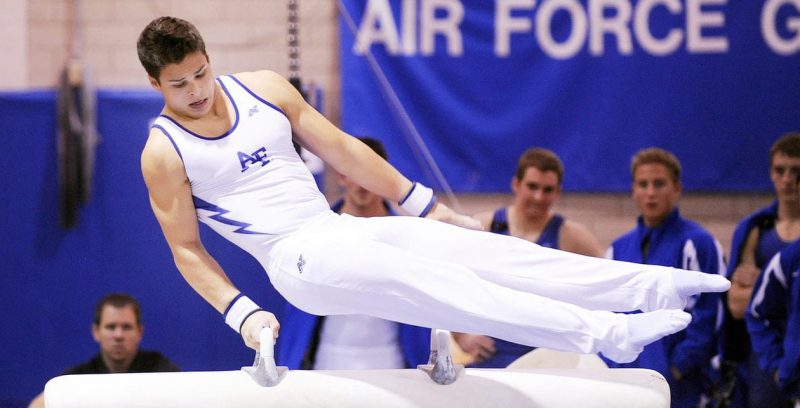We explain what gymnastics is and what its origin is. Also, what types of gymnastics exist and their health benefits.

What is gymnastics?
Gymnastics is a sports discipline that consists of executing systematic sequences of physical exercises in which different body skills are developed, such as strength or elasticity. It is one of the main Olympic disciplines.
The origin of gymnastics dates back to Ancient Greece where it was practiced consecutively along with other disciplines in circuses and competitions. However, it was the Romans who used it the most, to recreate combats between gladiators.
Later, in the Middle Ages, it was not a very well-regarded discipline: it was practiced by jesters and mountebanks as a form of spectacle. Until the time of the Renaissance it was claimed as a sport by figures such as Martin Luther (1483-1546). Today gymnastics has several modalities and can be practiced both for pleasure and for competitive, educational and even therapeutic purposes.
The word “gymnastics” comes from the Greek γυμνασία, whose translation into Spanish is “a fan of athletic sports.”
Types of gymnastics

Today, the practice of gymnastics is governed and professionally organized by the International Gymnastics Federation, founded in 1881 and based in Moutier, Switzerland.
According to its Olympic regulations, Six types of gymnastic discipline are recognized. They are:
- Rhythmic gymnastics. It differs from the others in that it incorporates elements of dance and ballet, which is why it is practiced with background music and complementary elements such as the ball, ribbon, rope and hoop, among others. In a competition, it is always evaluated in two categories: individual and group.
- artistic gymnastics. Very similar to rhythmic gymnastics, it incorporates choreography and synchronized movements that are performed at high speed. Among all gymnastic disciplines, it is the one with the greatest Olympic tradition.
- acrobatic gymnastics. It is practiced in a group and, in addition to artistic or gymnastic movements, it includes colorful aerial acrobatics, which require strength, coordination, precision and a lot of confidence.
- Aerobic gymnastics. Its movements come from aerobics, so the execution of the movement pattern includes variations in intensity and rhythm. Therefore, it is the most intense gymnastic discipline.
- Gymnastics with trampoline. It is practiced on trampolines or trampolines to propel the athlete's body into the air and allow them to execute different movements before landing in the most graceful way possible.
- Gymnastics for everyone. It is the only non-competitive form of gymnastics, since it usually consists of the production of a visual spectacle with music, colors, costumes and scenery. In fact, elements from any of its sister disciplines can be included in its demonstrations.
Benefits of gymnastics
Like all sports, gymnastics is highly beneficial for health since it exercises the cardiovascular and respiratory system, in addition to subjecting the muscles and joints to different levels of sustained effort.
In general, practicing gymnastics develops physical abilities such as elasticity and speed, improves reaction capacity and reflexes, and allows greater coordination and greater body control.
gymnastics It also has psychological benefits: allows you to work on self-confidence and, when the practice is in a group, the ability to work as a team or as a couple. Likewise, in competitive environments, it promotes self-improvement, tolerance for frustration, perseverance and fighting spirit.
Continue with:
References
- Dominican Olympic Committee. (2021). Gym. https://colimdo.org/
- Argentine Gymnastics Confederation. (2019). Men's artistic gymnastics. https://gimnasiargentina.com/
- Erbach, B. (1985). Gymnastics all year round. Stadium.





